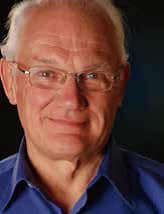Troubleshoot your Process Analyzer

Troubleshoot Your Process Analyzer
Tony Waters is widely acknowledged as the leading expert in the design of sampling systems. His book, Industrial Sampling Systems, captures the knowledge acquired during a career of more than 50 years of practical experience with industrial Process Analyzers. Waters tackles some of the most common questions he’s encountered.
“Why can’t I remove (or revaporize) the liquid condensate in my gas sample?”
It’s because the sample has already fractionated and the gas analysis has changed.
“My filter blocks often, so should I be using a bigger filter?”
Yes, a bigger filter will last longer, but it may cause an unacceptable time delay.
“Why is excessive time delay such a common problem with sampling systems?”
It’s a common problem, because time delay is invisible. An analyzer that is ‘99% reliable’ may be reliably measuring what happened yesterday!
“Should I use a probe?”
Most of the time, yes. A probe can exclude some of the solids or liquids in the process fluid, and provide a faster response to process change.
“What is the best size of tube or pipe for the sample transport lines?”
The best size is the one that provides the desired speed, turbulent flow and reasonable pressure drop, without an excessive flow rate.
“Is software for designing sampling systems available?”
Software is useless if you don’t know what you’re doing.
“What pore size of sintered stainless steel filter is best to protect an analyzer?”
Any one you like. They all stop the same size particles!
“What’s a key difference between the system design for a filter and for a coalescer?”
The key difference is you can have a fast bypass flow from a filter, but the coalescer bypass flow must be slow.
“What is the most common mistake that people make with analyzer sampling systems?”
Choosing the lowest bidder without having a clear idea of what will be provided.
